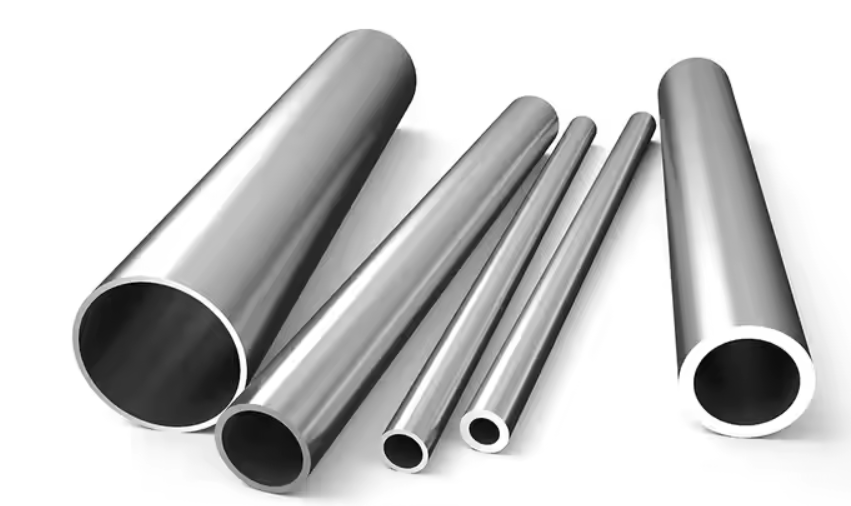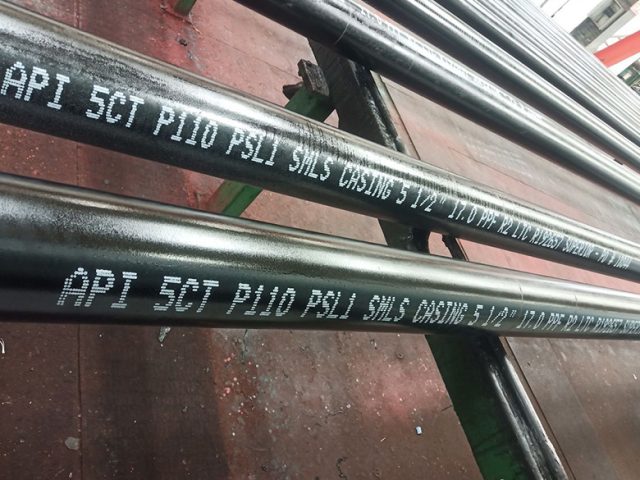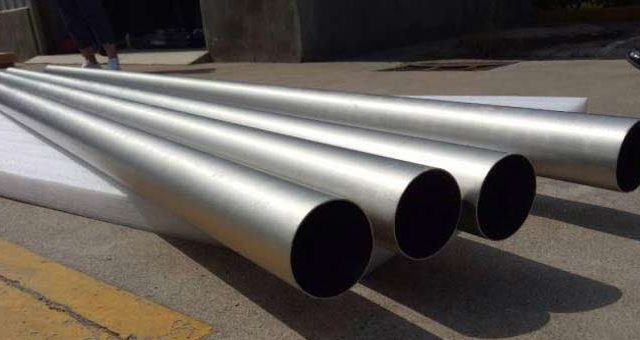Hastelloy B-2 UNS N010665 alloy steel pipe

Hastelloy B2 is indeed a remarkable solid solution strengthened nickel-molybdenum alloy that offers exceptional resistance to reducing environments. Its ability to withstand corrosive substances like hydrogen chloride gas, sulfuric acid, acetic acid, and phosphoric acid makes it a highly sought-after material in various industries.
The primary alloying element in Hastelloy B2 is molybdenum, which imparts remarkable corrosion resistance in reducing environments. This alloy steel pipe can be used in its as-welded condition because it resists the formation of grain-boundary carbide precipitates in the weld heat-affected zone. This characteristic ensures the integrity and longevity of the pipe even after welding.
One of the standout features of Hastelloy B2 is its excellent resistance to hydrochloric acid at all concentrations and temperatures. This makes it an ideal choice for applications where exposure to hydrochloric acid is prevalent. Additionally, Hastelloy B2 demonstrates exceptional resistance to pitting, stress corrosion cracking, and attacks in knife-line and heat-affected zones. It also provides resistance to pure sulfuric acid and several non-oxidizing acids.
However, it is important to note that Hastelloy B2 has certain limitations. It exhibits poor corrosion resistance in oxidizing environments, which means it is not recommended for use in such conditions. It is also not suitable for applications where ferric or cupric salts are present, as they can cause rapid premature corrosion failure. These salts can develop when hydrochloric acid comes into contact with iron or copper. Therefore, if Hastelloy B2 is used alongside iron or copper piping in a system containing hydrochloric acid, the presence of these salts could lead to premature failure of the alloy.
Furthermore, it is crucial to avoid using Hastelloy B2 in temperatures ranging from 1000°F to 1600°F, as it experiences a reduction in ductility within this temperature range. This reduction in ductility can compromise the overall performance and reliability of the alloy steel pipe.
In conclusion, Hastelloy B2 is a highly corrosion-resistant alloy steel pipe that offers exceptional resistance to reducing environments. Its resistance to various corrosive substances, including hydrochloric acid, makes it a popular choice in industries where such exposure is common. However, it is important to consider its limitations, such as poor resistance to oxidizing environments and the presence of ferric or cupric salts. By understanding these factors, one can make informed decisions regarding the use of Hastelloy B2 alloy steel pipes in different applications.
The properties of Hastelloy B-2 include:
Chemical Composition:
Nickel (Ni): 68%
Molybdenum (Mo): 28%
Iron (Fe): 2%
Chromium (Cr): 1%
Carbon (C): 0.02%
Other elements like Cobalt (Co) and Manganese (Mn) in smaller amounts
.
Corrosion Resistance:
Excellent resistance to reducing environments such as hydrogen chloride gas, sulfuric, acetic, and phosphoric acids.
Resists pure sulfuric acid and various non-oxidizing acids.
Not recommended for oxidizing media or where iron or copper is present in hydrochloric acid systems to avoid premature failure
.
Mechanical Properties:
Ultimate Tensile Strength: 110 Ksi
Yield Strength: 51 Ksi
Elongation: 40%
Hardness: Rockwell
.
Applications:
Widely used in the chemical process industry for handling sulfuric, phosphoric, hydrochloric, and acetic acid.
Suitable for applications involving chloride-induced stress-corrosion and reducing chemical environments
.
Welding and Fabrication:
Can be easily welded and formed.
Resists stress corrosion cracking in chloride-bearing solutions.
Withstands fluoride-bearing media and concentrated sulfuric acid
.
Temperature Range:
Suitable for use from ambient temperature to 1500°F depending on the environment
.
Other Characteristics:
Resistant to pitting corrosion and stress corrosion cracking.
Provides superior resistance to hydrochloric acid, aluminum chloride catalysts, and other strongly reducing chemicals
.
Hastelloy B-2 is known for its exceptional resistance to a wide range of corrosive environments, making it a valuable alloy in various industrial applications where high corrosion resistance is essential.
what are the advantages of using hastelloy b over other alloys
The advantages of using Hastelloy B over other alloys include:
Excellent Corrosion Resistance:
Hastelloy B offers superior resistance to a wide range of corrosive media, including acids, alkalis, and salts.
It can withstand high temperatures and pressures without significant corrosion or degradation
.
High Strength:
Hastelloy B has high tensile strength and excellent resistance to wear and tear, making it suitable for extreme conditions without losing structural integrity
.
Good Weldability:
Easily welded using various techniques like TIG, MIG, and stick welding, forming a strong bond with the parent material without cracking or distortion
.
Low Thermal Expansion:
With a low coefficient of thermal expansion, Hastelloy B does not undergo significant expansion or contraction when exposed to temperature changes, making it suitable for high-temperature applications
.
Cost-Effectiveness:
Compared to other highly corrosion-resistant alloys like Hastelloy C276 and Inconel 625, Hastelloy B offers similar corrosion resistance and mechanical properties at a lower cost
.
Hastelloy B’s combination of corrosion resistance, high strength, good weldability, low thermal expansion, and cost-effectiveness makes it a preferred choice in industries such as chemical processing, petrochemical, power generation, aerospace, and more where demanding applications require reliable performance in harsh environments.
what are the alternatives to hastelloy b for corrosion-resistant applications
Some alternatives to Hastelloy B for corrosion-resistant applications include:
Hastelloy B-2:
Offers excellent resistance to reducing environments like hydrogen chloride gas, sulfuric acid, and phosphoric acid.
Provides high resistance to pitting, crevice corrosion, and stress corrosion cracking, making it suitable for harsh environments
.
Hastelloy B-3:
Features enhanced thermal stability and improved fabrication characteristics compared to previous B-family alloys.
Resistant to reducing conditions like hydrogen chloride and sulfuric acid, making it ideal for equipment in such environments
.
Hastelloy C Alloys:
Hastelloy C alloys, including Hastelloy C-22, C-276, and C-2000, offer excellent overall corrosion resistance in various chemical process media.
These alloys exhibit good resistance to oxidizing and reducing environments, making them versatile choices for corrosion-resistant applications
.
Hastelloy G Alloys:
Hastelloy G-3 and G-30 are high-performance corrosion-resistant alloys with excellent resistance to oxidation, atmospheric corrosion, and stress corrosion cracking.
These alloys are known for their resistance to pitting, crevice corrosion, and chloride ion stress corrosion in challenging environments
.
Other Alternatives:
Inconel alloys like Inconel 625 offer good corrosion resistance in various environments.
Titanium alloys like Grade 7 Titanium provide excellent resistance to corrosive media.
Stainless steel grades like 316L and 904L are commonly used for their corrosion resistance properties in specific applications.
These alternatives to Hastelloy B offer a range of corrosion-resistant properties suitable for different industrial applications where protection against harsh environments is crucial. Each alloy has its unique characteristics that make it suitable for specific conditions and requirements in diverse industries.
what are the similarities between hastelloy b and hastelloy c
The similarities between Hastelloy B and Hastelloy C are:
High-Nickel Alloys:
Both Hastelloy B and C are high-nickel alloys containing chromium, molybdenum, and iron, which contribute to their excellent corrosion resistance properties
.
Corrosion Resistance:
Both alloys exhibit excellent corrosion resistance in various environments, making them suitable for applications in chemical processing, nuclear waste disposal, and other industries where corrosion resistance is critical
.
Mechanical Properties:
They have similar mechanical properties such as ductility and strength, allowing them to withstand challenging conditions with high performance and reliability
.
Applications:
Both alloys find applications in petrochemical processing, aerospace engineering, offshore oil & gas platforms, power generation, and medical equipment manufacturing due to their corrosion resistance and mechanical properties
.
Composition:
While both alloys contain nickel, chromium, molybdenum, and iron, Hastelloy B has more nickel than C, while C contains more chromium. Hastelloy B also contains tungsten, whereas Hastelloy C contains cobalt
.
Temperature Resistance:
Hastelloy B has a higher temperature limit than Hastelloy C, making it more suitable for applications requiring high-temperature performance
.
Fabrication:
Hastelloy B is easier to fabricate than Hastelloy C due to its lower carbon content, making it a better choice for applications where fabrication is a concern
.
In summary, while both Hastelloy B and C share similarities in being high-nickel alloys with excellent corrosion resistance and mechanical properties, they differ in their composition, temperature resistance, fabrication ease, and specific applications where one may be more suitable than the other based on these differences.
The Difference Between Various Hastelloy
The search results provide detailed information about Hastelloy B-2, a nickel-molybdenum alloy known for its resistance to reducing environments like hydrogen chloride gas and sulfuric, acetic, and phosphoric acids. Here are some key points about Hastelloy B-2:
Chemical Composition: Hastelloy B-2 consists of nickel (Ni) at 68%, molybdenum (Mo) at 28%, iron (Fe) at 2%, cobalt (Co) at 1%, chromium (Cr) at 1%, carbon (C) at 0.02%, and manganese (Mn) at 1.0%
.
Corrosion Resistance: It provides resistance to pure sulfuric acid and various non-oxidizing acids, but should not be used in oxidizing media or where iron or copper is present in a system containing hydrochloric acid to avoid premature failure
1
.
Applications: Hastelloy B-2 is commonly used in the chemical process industry for handling sulfuric, phosphoric, hydrochloric, and acetic acid. Its temperature range varies from ambient temperature to 1500°F depending on the environment
1
.
Mechanical Properties: The alloy exhibits excellent resistance to pitting and stress corrosion cracking, making it suitable for most chemical process applications in the as-welded condition. It also has superior resistance to hydrochloric acid and other strongly reducing chemicals
1
.
Hastelloy B-2 is a versatile alloy known for its exceptional corrosion resistance properties in challenging environments, making it a preferred choice for various industrial applications where resistance to reducing environments is crucial.





3 comments
30.01hry
2024年3月15日 at am2:49
What is the difference between Hastelloy B2 and B3?
Ronsun2023
2024年3月24日 at pm1:03
The higher coating thickness required by BS1139 provides enhanced protection, especially for exterior applications where corrosion is more aggressive. EN39 allows for 5-10% lower coating weights.
Ronsun2023
2024年3月24日 at pm1:04
Hastelloy B3 Round Bars vs Hastelloy B2 – What’s the …
Both alloys are corrosion-resistant, but Hastelloy B3 offers better resistance to a broad spectrum of chemicals such as hydrochloric acid, sulfuric acid, and phosphoric acid. In contrast, Hastelloy B2 is ideal for use in reducing environments like hydrogen chloride gas, hydrofluoric acid, and acetic aci